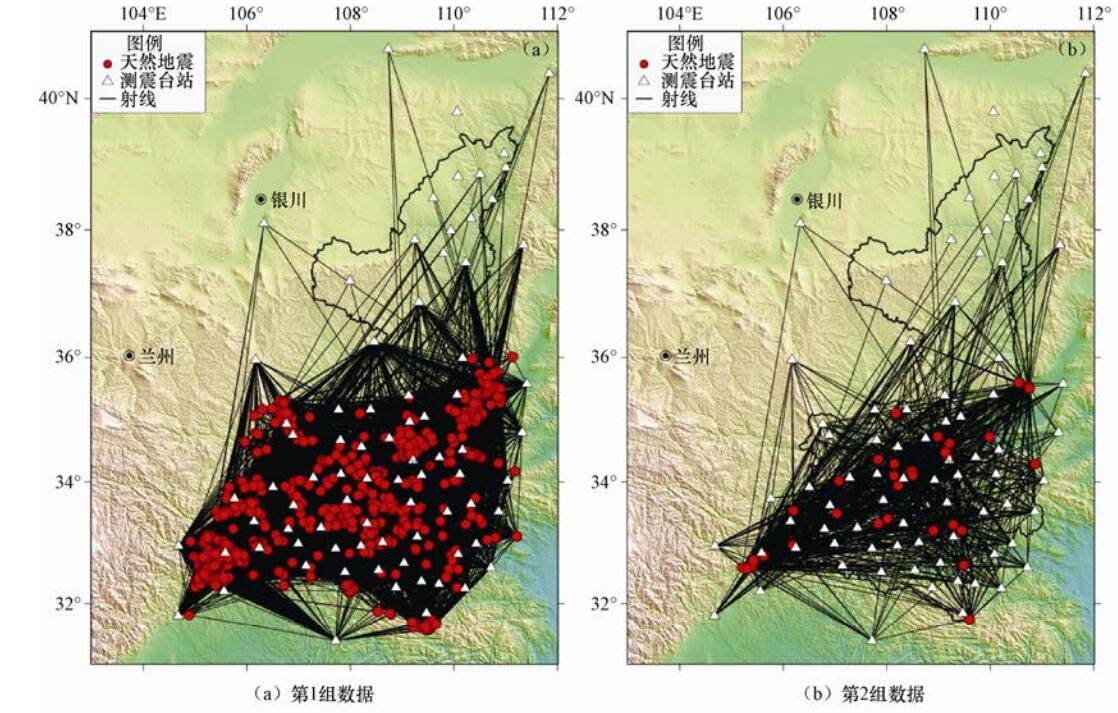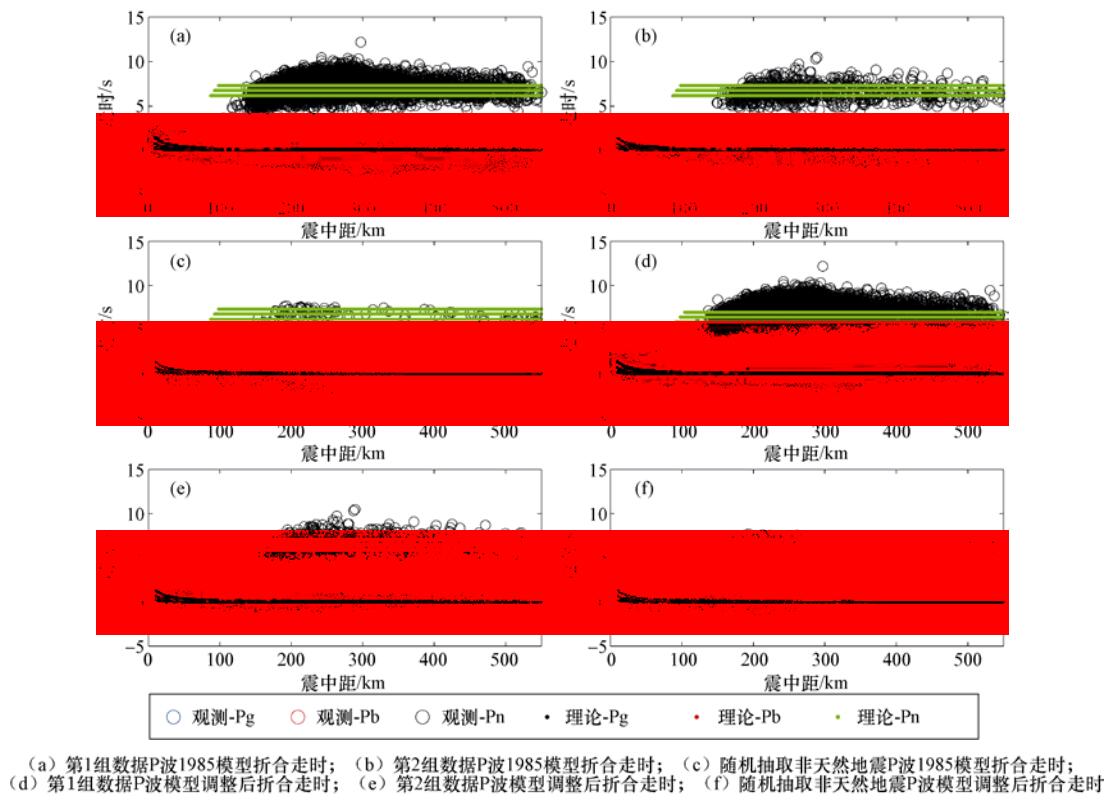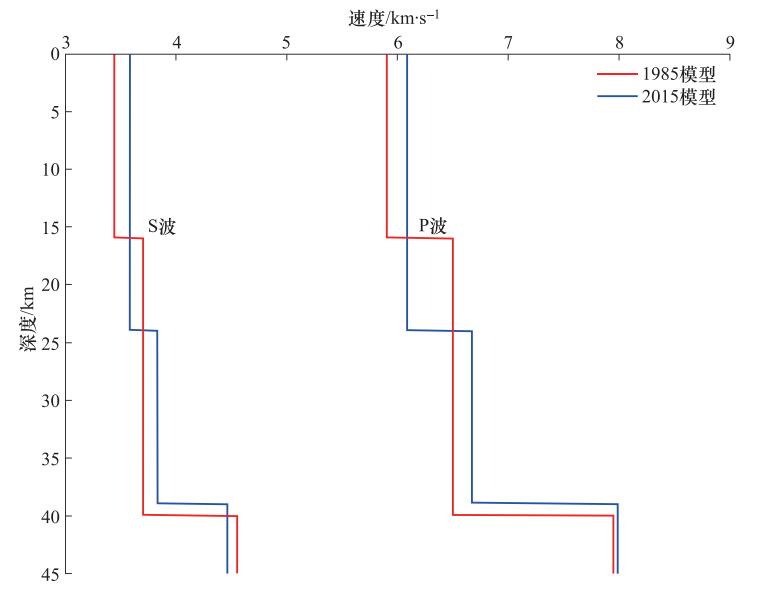Crustal Velocity Model of the Shaanxi Region
-
摘要: 本文以陕西地震台网2009年1月—2014年4月地震观测报告数据为基础,并在前人对该区域地壳速度模型研究成果的基础上,依据地震、爆破及塌陷的震相速度拟合曲线与折合走时曲线等结果,确定初始模型及扰动范围。再采用Hyposat定位程序对地震资料进行“试错”,最终确定了可供台网日常使用的地壳速度模型及各层的波速比结果,最后对模型进行了对比检验。结果表明:2015模型比1985模型的定位走时残差小,震中位置偏差减小,确定的实测爆破地震位置参数更准确。2015模型较1985模型更符合陕西地区的地质构造特征。Abstract: Based on previous studies of the crustal velocity model in the Shaanxi area, we reviewed the seismic curve of "phase velocity fitting curve" of earthquake, and determined blasting and collapse, the initial model and the disturbance range via the seismic observation data of Shaanxi Digital Seismic Network from January 2009 to April 2014. And then, the Hyposat locating program is used to test and verify the seismic data. Finally, the crustal velocity model and the wave velocity ratio of each layer are determined for the daily use of the network. Comparison of the results from different models shows that the 2015 model has smaller residual error and epicentral difference than the 1985 model. The basic parameters of the measured blasting for the 2015 model are also relatively accurate. Therefore, the 2015 model is better in application in the geological structure characteristics of the Shaanxi region than the 1985 model.
-
Key words:
- Crustal velocity model /
- 1985 model /
- 2015 model
-
表 1 3种情况下速度稳定性
Table 1. Velocity stability in three cases
VPg/km·s-1 VSg/km·s-1 VPn/km·s-1 VSn/km·s-1 随区域增大 速度范围 6.07—6.08 3.53—3.56 7.05—7.80 3.98—4.46 平均速度 6.08 3.55 7.43 4.22 不同区域范围
(150km)速度范围 6.03—6.12 3.53—3.61 7.05—8.18 3.98—4.63 平均速度 6.08 3.57 7.62 4.30 不同区域范围
(200km)速度范围 5.94—6.10 3.54—3.60 7.05—8.14 4.12—4.62 平均速度 6.02 3.57 7.60 4.37 表 2 陕西1985地壳速度模型
Table 2. Crustal velocity model of Shaanxi Province in 1985
VP/km·s-1 VS/km·s-1 H/km 5.90 3.44 16 6.50 3.70 24 7.95 4.55 表 3 初始模型
Table 3. Initial model
地壳分层 VP/km·s-1 扰动范围/km·s-1 H/km 扰动范围/km 上地壳 6.09 5.8—6.1 24 16—24 下地壳 6.67 6.4—6.8 15 上地幔 7.99 7.8—8.1 38—42 表 4 2015地壳速度模型
Table 4. Crustal velocity model in 2015
地壳分层 P波速度/km·s-1 S波速度/km·s-1 厚度/km 上地壳 6.09 3.58 24 下地壳 6.67 3.83 15 莫霍面 7.99 4.46 表 5 不同速度模型的实测爆破定位结果
Table 5. Positioning results of measured blasting with different velocity models
发震时刻 纬度/°N 经度/°E 深度/km 与实测震中差/km 残差/s 说明 01:40:14.523 34.81 109.39 实测结果 01:40:14.090 34.81 109.37 1 1.94 0.497 1985模型 01:40:15.400 34.81 109.39 1 1.14 0.321 2015模型 -
丁韫玉, 曹家敏, 黄长林等, 1987.随县-西安剖面地壳结构的初步研究.地球物理学报, 30(1):31-38. http://manu39.magtech.com.cn/Geophy/CN/abstract/abstract4899.shtml 郭瑛霞, 张元生, 颜文华等, 2017.甘东南地区基于射线追踪面波频散三维成像.地震工程学报, 39(2):268-277. http://www.cnki.com.cn/Article/CJFDTOTAL-DQWX199703013.htm 姜家兰, 1985. 陕西地区地震波走时表. 西安: 陕西省地震局. 李松林, 张先康, 张成科等, 2002.玛沁-兰州-靖边地震测深剖面地壳速度结构的初步研究.地球物理学报, 45(2):210-217. http://mall.cnki.net/magazine/Article/DQWX200202006.htm 罗佳宏, 马文涛, 李春政, 2017.结合波形互相关的双差定位方法在三峡水库地震中的应用.震灾防御技术, 12(1):56-67. doi: 10.11899/zzfy20170106 吕作勇, 杨传成, 房立华, 2014.广东地震台网近震定位精度的经验性GT准则.震灾防御技术, 9(S1):657-664. doi: 10.11899/zzfy2014s112 任隽, 彭建兵, 王夫运等, 2012.渭河盆地及邻区地壳深部结构特征研究.地球物理学报, 55(9):2939-2947. doi: 10.6038/j.issn.0001-5733.2012.09.013 滕吉文, 李松岭, 张永谦等, 2014.秦岭造山带与邻域华北克拉通和扬子克拉通的壳、幔精细速度结构与深层过程.地球物理学报, 57(10):3154-3175. doi: 10.6038/cjg20141006 王平, 惠少兴, 狄秀玲等, 2014.陕西区域地震目录最小完整性震级研究.震灾防御技术, 9(S1):702-708. doi: 10.11899/zzfy2014s118 王卫东, 张永志, 王平等, 2004.渭河断陷盆地及邻近地区地震活动的深部背景.地球科学与环境学报, 26(3):57-60. http://www.wanfangdata.com.cn/details/detail.do?_type=perio&id=xagcxyxb200403012 尹欣欣, 杨立明, 陈继锋等, 2017.甘肃地区一维速度模型计算研究.地震工程学报, 39(1):154-259. http://www.cnki.com.cn/Article/CJFDTotal-SYDQ2013S1003.htm 张元生, 李清河, 徐果明, 1998.联合利用走时与波形反演技术研究地壳三维速度结构(Ⅱ)——应用.西北地震学报, 20(3):44-51. http://www.cnki.com.cn/Article/CJFDTOTAL-ZBDZ803.007.htm 赵韬, 赵曦, 王莹等, 2016.区域台网地震矩张量快速反演系统研究.地震学报, 38(6):889-897. doi: 10.11939/jass.2016.06.008 朱元清, 赵仲和, 1997.提高地震定位精度新方法的研究.地震地磁观测与研究, 18(5):59-67. http://cdmd.cnki.com.cn/Article/CDMD-10183-1016083616.htm 朱元清, 于海英, 2002.上海地震台阵(网)近震定位的翻台方法.地震地磁观测与研究, 23(2):97-106. http://www.wanfangdata.com.cn/details/detail.do?_type=perio&id=dzdcgcyyj200202013 -




 下载:
下载:





